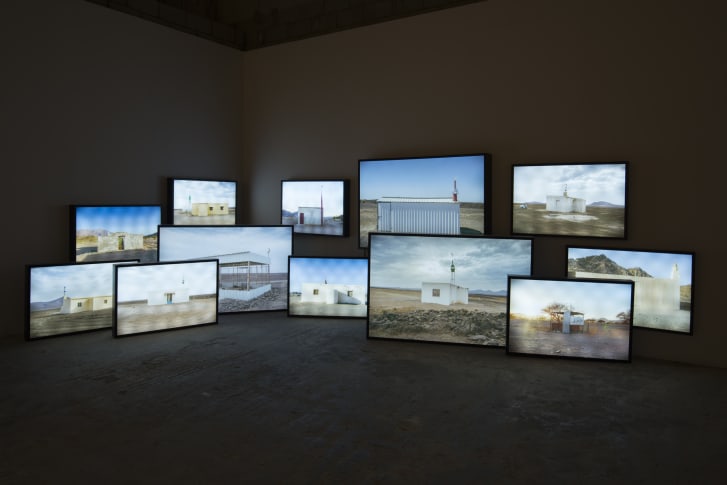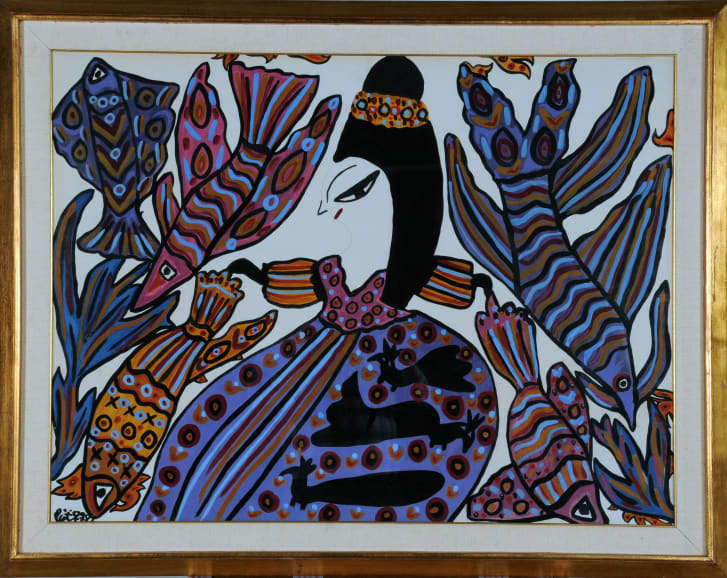CNN. Positioned between Africa, Europe and Asia, Dubai is open to artistic and cultural influences from around the world. This has led to a vibrant, emerging local arts scene.Until recently, this scene has been led by private galleries showing local artists, but now the Dubai government is building its first institutional art collection from scratch — and there’s a twist.Dubai won’t be buying any art — it will be borrowing it. National art collections and museums were popularized in Europe during the 18th and late 19th century, and typically, these collections are built over long periods of time by purchasing or being gifted works. But Dubai aims to fast-track the process.The initiative was developed by Dubai Culture & Arts Authority and Art Dubai and will include a digital museum, as well as annual physical exhibitions of selected works — the first of which will be held at Dubai’s Etihad museum later in the year.World’s largest canvas painting fetches $62M at Dubai charity auctionThe idea is to foster a collective culture and create a canon of art history that has not been present in the Middle East, according to Art Dubai — without having to rely on government funding.”Dubai Collection is the first initiative of its kind globally,” said Benedetta Ghione, Art Dubai’s executive director. “Patrons (contributors) are invited to lend their works to the Dubai Collection for a period of 10 years, while remaining legal owners of their pieces.” However, the physical artworks will only be loaned for the times they are on display.
A new model
So far, 87 works have been selected as part of the first curation process. Most are from Emirati artists or artists from the wider Arab world. Ghione says a curation committee, made up of experts, selects which artworks are chosen to best represent the art of the region.

The Last Tashahhud, by Moath Alofi, shows the mosques “scattered along the winding roads leading to the holy city of Medina, Saudi Arabia.” Credit: Courtesy of A.R.M HoldingThe collection includes work from Emirati artists such as abstract painter Abdul Qadar Al Rais, who is known for combining geometric shapes with Arabic calligraphy, and conceptual artist Mohamed Ahmed Ibrahim.”Dubai collection will build a comprehensive database of artworks, artists and art collectors, as well as help document what is still a relatively young contemporary art scene,” said Muna Al Gurg, chair of Dubai Collection’s curatorial committee.Meet Yahya Jan, the architect building the world’s tallest hotel, Dubai’s Ciel TowerAl Gurg believes that by borrowing artworks, Dubai will be able to develop a collection faster than by buying them.”Creating a national collection is often a lengthy process of navigating an ever-changing art market and diplomatic negotiations with stakeholders … but through our loan-based model we expect to be able to develop several exhibition concepts in the first few years within launching the initiative,” said Al Gurg.She adds that having temporary exhibitions, rather than a permanent display, can be an inspiring way to show a collection. “At this stage in the development of the initiative, we see the temporary exhibition as the preferred format for engaging the public in person,” she said.

This untitled piece is by Algerian-born artist Baya Mahieddine (1931-1998) who was known simply as “Baya.” Credit: Courtesy of His Highness Sheikh Mohammed bin Rashid Al MaktoumJanet Rady, a specialist in modern and contemporary Middle Eastern art, says the Dubai collection is likely a response to others in the region, such as Qatar, Saudi Arabia and Abu Dhabi, promoting art from a government level.While Dubai is home to nonprofit Jameel Arts Center, as well as commercial galleries, such as those in art hub Alserkal Avenue, the city lacks institutional collections.”It’s a nascent art scene, it’s still quite private,” said Rady. “There’s no real museum as such that’s open permanently to show modern and contemporary Arab art so in that sense, I think it’s definitely filling a gap. It’s perfectly standard in the market to validate your works by having them shown in a museum.”
A digital museum
Part of the Dubai Collection initiative is a digital museum, which will allow more people to see the art, and will include educational materials.‘Microchip manicure’ turns your nails into business cardsRady says the digital museum could help provide international exposure. “One of the problems is the visibility of the Middle Eastern art world to people outside the Middle East,” she said, adding the collection could encourage young people to get into the arts.Al Gurg adds that while the digital museum is an important element of the collection, artworks usually have the most impact when viewed in person.”Although Dubai’s art scene seems relatively young, its vibrant, multicultural and innovative nature very much reflects the spirit and identity of its home,” said Al Gurg. “Looking further ahead, we hope to further grow the Dubai Collection with the aim of highlighting even more artists and stories.”
CNN.
